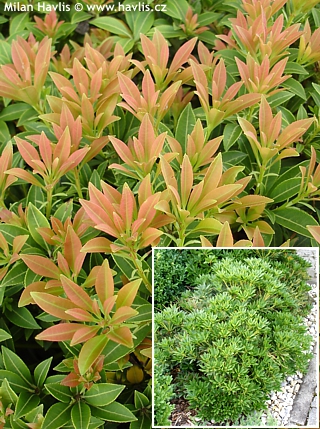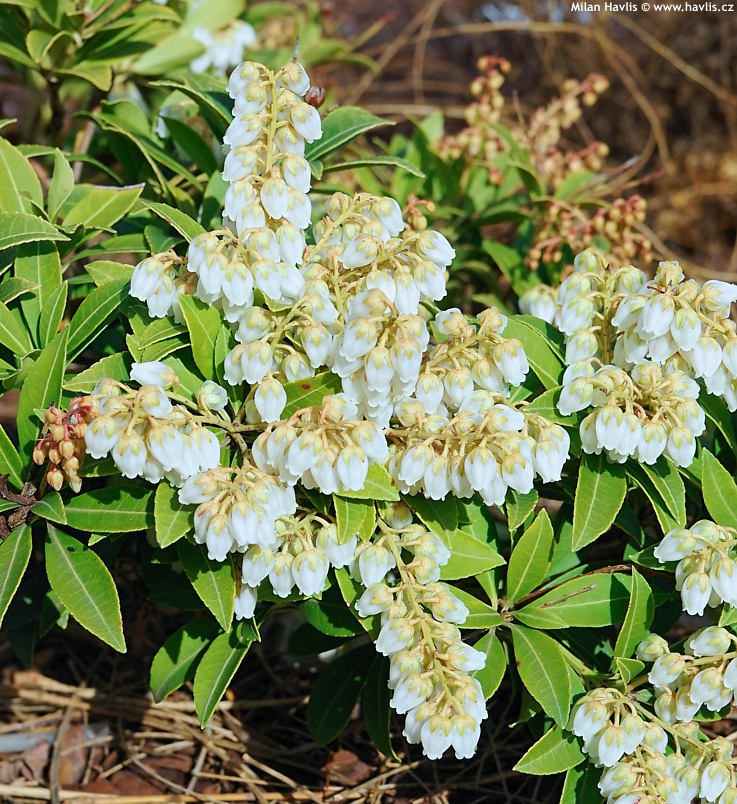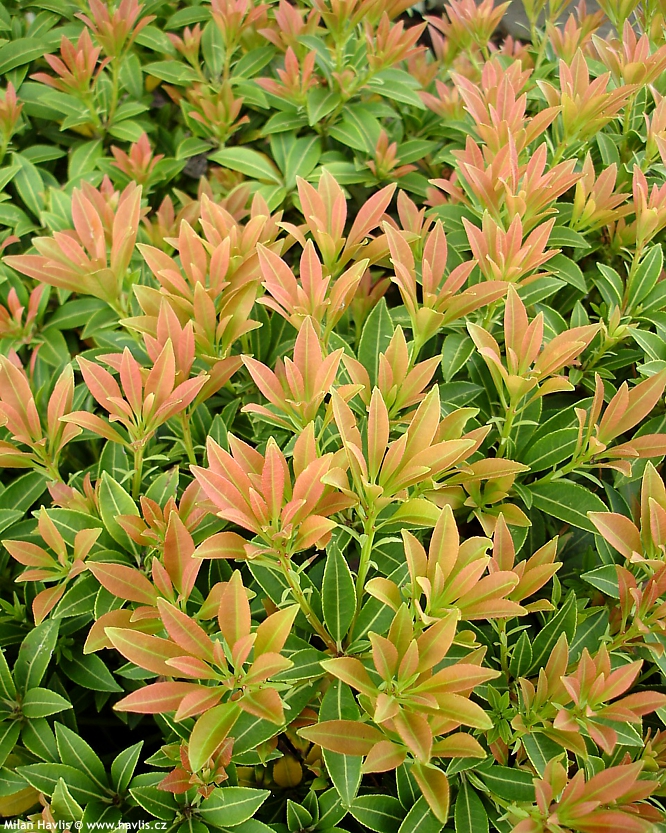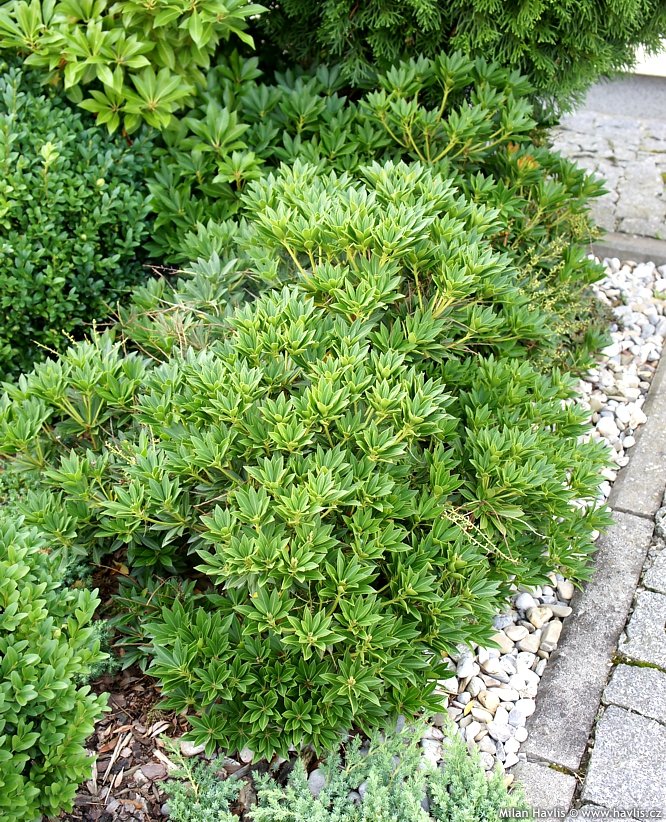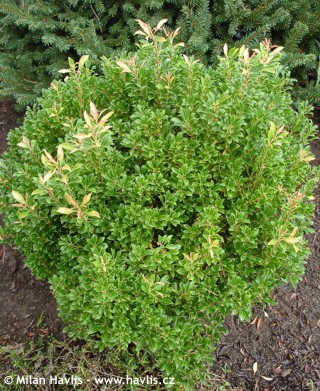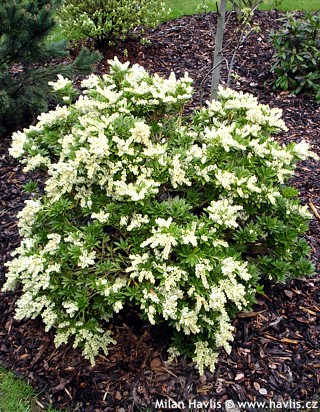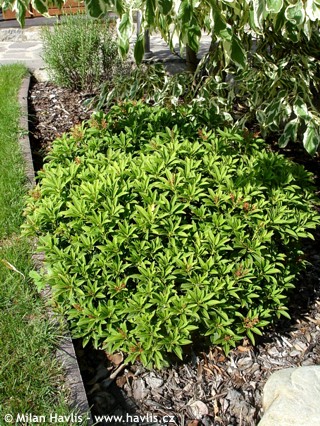Pieris japonica ssp. yakushimanum 'SARABANDE' lily-of-the-valley shrub
size/type
medium-sized shrub,small shrub
usual height
0,5-1,2m
usual width
0,5-1,3m
leaves
evergreen broadleaf
colour of leaves
flowers
showy
colour of flowers
blooming time
March-April
location
full to partial sun
soil type
acidic (peaty)
soil moisture requirements
evenly moist but well-drained
USDA zone (lowest)
5b (down to -27°C)
winter protection
for zone 5+6

for zone 7

categorized
Description of the plant:
Lily-of-the-valley shrubs are very popular ericaceous plants with attractive foliage and abundant flowering. Sarabande is a compact to even dwarf variety from the Yakushimanum group. In late summer it makes short, upright racemes composed of small flower buds which need almost half a year to mature, and open in March into small, pure white, lily-of-the-valley-like, urn-shaped flowers. Evergreen leaves are leathery, narrowly lance-shaped, pointed, shallowly serrated at margins, coppery orange as they emerge after the flowers begin to fade away, and dark green when they mature. The plant grows slowly forming dense and well-branched, dome-shaped shrubs of handsome habit. It is perfect for a mixed border among dwarf conifers, for a large rockery, and it will also look great in a large pot on a patio.
Pieris does not require much maintenance. But if you wish to have a perfect plant here are a few tips: cut off spent flower racemes to prevent them from making seeds. During late spring and summer check the leaves 2 or 3 times for tiny spots on the upper sides – they manifest insect attack whose miniature worms are living inside the leaves and produce sticky sap on the underneath of the leaves. In such case spray it with a suitable insecticide – one dose is usually enough. In winter remove heavy and wet snow from the top of the plant to prevent its fragile branches from bending or breaking.
Ericaceous plants, among which pieris belongs, require soil that is light, acidic, and constantly moist but not wet. If your garden soil is too heavy do not dig a hole at all but make a raised bed. Use a good mixture of peat, fine bark chips, and leaf mould. Keep the soil moist by mulching. Slow-release fertilizers for acid-loving plants are advised. Hardy to about -27 °C and suitable for year-round cultivation in planters with good drainage (no saucers).
Last update 15-02-2022
QUICK PRICE OVERVIEW
CURRENTLY SOLD OUT
WANT TO TRY A SIMILAR PLANT?












